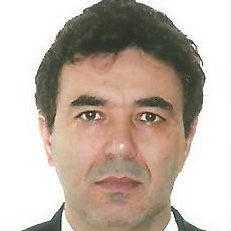Topic Editors

2. Department of Electrical Engineering, Federal University of Technology—Parana, Ponta Grossa 84017-220, Paraná, Brazil


Nonlinear Phenomena, Chaos, Control and Applications to Engineering and Science and Experimental Aspects of Complex Systems

Topic Information
Dear Colleagues,
The need for dynamics and the control of nonlinear oscillating systems is ubiquitous in engineering, since real-world engineering systems are, in general, nonlinear and oscillatory.
This multidisciplinary field encompasses computation, physics, mathematics, electrical and mechanical engineering, chemical processes, etc.
The objective of this theme is to propose a set of publications that will provide a forum for discussing and disseminating the latest approaches, methodologies, results, and current challenges in nonlinear dynamics and chaotic systems.
Contributions can include all analytical, computational, and experimental aspects of nonlinear dynamics, chaos and control including fractional approaches, electromechanical systems at MACRO, MEMS, and NEMS scales, nonideal oscillating systems (limited power supplies) and novel phenomena and behaviors regarding several aspects of symmetry in nonlinear dynamics, chaos and control.
This theme will also provide a great opportunity for disseminating recent developments in analytical and numerical techniques, and discussing novel phenomena and behaviors regarding several aspects of nonlinear dynamics and control. In addition, works related to relevant and current issues, such as epidemiological models, rumor dissemination and complex systems, are also welcome.
Finally, researchers and practitioners are invited to submit their original research work on the rapidly developing field of nonlinear dynamics and control of system oscillations and their applications to engineering and science. Therefore, we encourage the submission of the practitioners’ latest unpublished works.
Prof. Dr. José Balthazar
Prof. Dr. Angelo Marcelo Tusset
Dr. Átila Madureira Bueno
Dr. Diego Colón
Dr. Marcus Varanis
Topic Editors
Keywords
- nonlinear dynamics, chaos in oscillating systems at macro-, micro- or nano-scales; systems in fractional orders; entropy; fuzzy systems; complex systems
- global nonlinear dynamics for engineering design and system safety: erosion of basins of attraction—dynamical integrity
- MEMs systems; atomic force microscopy
- nonlinear control of nonlinear oscillating systems at macro-, micro- or nano-scales; optimal, robust and adaptive control of nonlinear oscillating systems; process control of nonlinear oscillating systems in engineering processes; metamaterials and their control
- sensitivity analysis in macro and MEMS modeling; polynomial chaos
- energy transfer between oscillators; synchronization
- biomathematics; bio-inspired models
- rumor and information dissemination
- acoustic levitation
- astrodynamics
Participating Journals
| Journal Name | Impact Factor | CiteScore | Launched Year | First Decision (median) | APC | |
|---|---|---|---|---|---|---|

Applied Sciences
|
2.7 | 4.5 | 2011 | 16.9 Days | CHF 2400 | Submit |

Axioms
|
2.0 | - | 2012 | 21.8 Days | CHF 2400 | Submit |

Entropy
|
2.7 | 4.7 | 1999 | 20.8 Days | CHF 2600 | Submit |

Mathematics
|
2.4 | 3.5 | 2013 | 16.9 Days | CHF 2600 | Submit |

Symmetry
|
2.7 | 4.9 | 2009 | 16.2 Days | CHF 2400 | Submit |

Dynamics
|
- | - | 2021 | 12.7 Days | CHF 1000 | Submit |

Machines
|
2.6 | 2.1 | 2013 | 15.6 Days | CHF 2400 | Submit |

MDPI Topics is cooperating with Preprints.org and has built a direct connection between MDPI journals and Preprints.org. Authors are encouraged to enjoy the benefits by posting a preprint at Preprints.org prior to publication:
- Immediately share your ideas ahead of publication and establish your research priority;
- Protect your idea from being stolen with this time-stamped preprint article;
- Enhance the exposure and impact of your research;
- Receive feedback from your peers in advance;
- Have it indexed in Web of Science (Preprint Citation Index), Google Scholar, Crossref, SHARE, PrePubMed, Scilit and Europe PMC.



